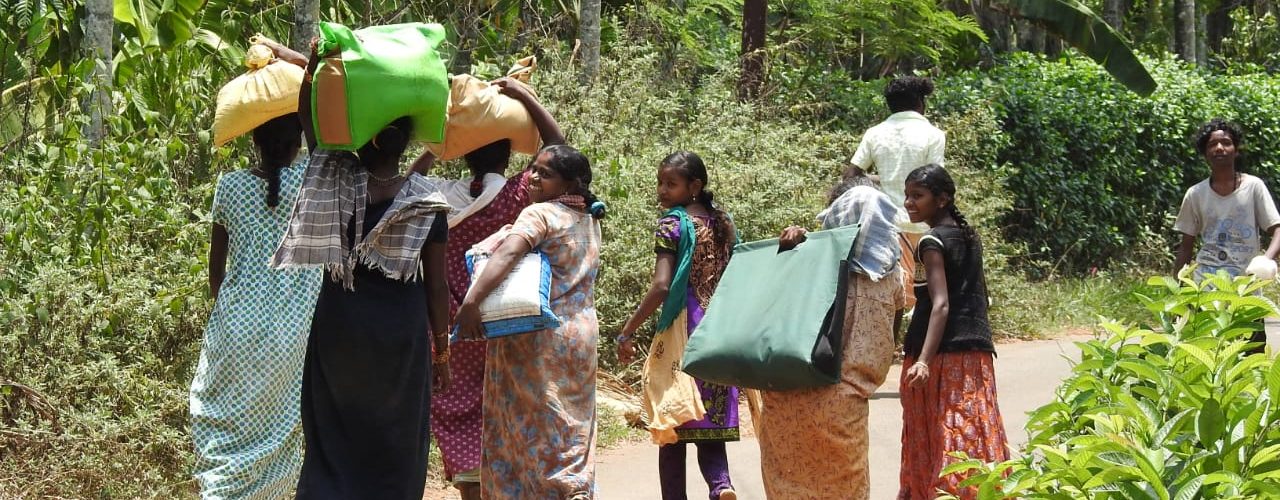Editor’s Note: FII’s #MoodOfTheMonth for July 2021 is Sustainability. We invite submissions on the diverse aspects of sustainability throughout the month. If you’d like to contribute, kindly email your articles to sukanya@feminisminindia.com
Most of us with access to resources are becoming increasingly aware of how serious the issue of sustainability is in the 21st century and the impact our day-to-day activities, even the most mundane ones like buying bottled water, have on the environment. Several people make it a point to carry their own shopping bags, use public transport as much as possible, and avoid running the air conditioner for prolonged periods to reduce their carbon footprint.
However, when we sit down to eat, we hardly give a thought to how sustainable our food choices are or what effects the production of our food has on global climate change. It is mid-2021, and most parts of India are reeling under the grip of another horrific summer. With Delhi NCR has been witnessing its first severe heatwave of the year since early July, there is no more denying the impact of global warming.

While most of us resort to blaming the excessive burning of fossil fuels and industrial activities for the increased concentrations of greenhouse gases in the atmosphere leading to the ongoing climate crisis, there is one aspect that contributes tremendously to climate change but is hardly discussed: animal agriculture.
The environmental impact of animal agriculture
Climate change refers to the long-term alterations to the temperature and typical weather patterns in a particular location or the planet as a whole. It could be driven by both natural and human-induced causes. Among human activities, animal agriculture is among the top contributors to greenhouse gas emissions second only to fossil fuels.
Animal agriculture puts a heavy strain on the planet’s finite land, water, and energy resources and is a leading cause of deforestation, biodiversity loss, and water and air pollution.
Animal agriculture has a much larger focus than just the rearing and slaughtering of farm animals for meat, egg, and milk production. This sector also encompasses the production of fodder for the cattle reared, which requires substantial resources like water, land, energy, and chemical inputs

Animal agriculture has a much larger focus than just the rearing and slaughtering of farm animals for meat, egg, and milk production. This sector also encompasses the production of fodder for the cattle reared, which requires substantial resources like water, land, energy, and chemical inputs.
Every step of meat, egg, and milk production releases climate-changing gases into the atmosphere and has the potential to disrupt weather, temperature, and ecosystem health in the long run.
The contribution of animal agriculture to global warming and climate change is tremendous. According to Tackling Climate Change Through Livestock, a widely-cited Food and Agriculture Organisation report, the global greenhouse gas emissions attributed to the livestock sector annually are broadly equivalent to the emissions generated through the fuel burned by all the world’s transport vehicles, including airplanes, trains, trucks, boats, and cars.

Animal agriculture is responsible for nearly one-fifth of human-induced greenhouse gas (GHG) emissions. It accounts for five percent of the global anthropogenic carbon dioxide emissions and comprises 44 percent of all anthropogenic nitrous oxide – the most potent of the greenhouse gas emissions.
Animal agriculture also constitutes up to 75-80 percent of total agricultural emissions, and accounts for 44 percent of anthropogenic methane emissions.
Also read: Is The Water Crisis In India The Beginning Of Climate Breakdown?
Furthermore, animal agriculture is extremely water-intensive. According to a Bio Science abstract of Water Resources: Agricultural and Environmental Issues published on the Oxford Academic site, “Agriculture consumes about 70% of freshwater worldwide; for example, approximately 1000 liters [265 gallons] of water are required to produce 1 kilogram [2.2 pounds] of cereal grain, and 43,000 liters [11,359 gallons] to produce 1 kilogram of beef.”
Climate crisis: It is the marginalised who are impacted more
Not everyone is affected equally by the effects of climate change. While the wealthy and more developed countries are mainly responsible for the gradual buildup of climate-changing gases and high per capita emissions, it is the poor people in the lower-income countries that are most vulnerable to climate change.
In a country like India, where several marginalised communities face food insecurities daily, it might not possible for everyone to shift to a plant-based diet. However, for those who are privileged enough to have access to a wide variety of food items, choosing a well-balanced plant-based diet is a feasible option
The most marginalised communities tend to live in high-risk areas such as coasts and arid regions and are less equipped to withstand the effects of climate change on food sources and water supplies.

Agricultural areas in developing countries are more prone to be hit by droughts and water unavailability. The poor population is more at risk for disease and death when hit by events such as drought, heatwaves, storms, and floods. Global warming can lead to extreme food shortages for the less privileged people in Africa and Asia within a few years.
Also read: Capitalism And Colonisation: How The Climate Change Movement Is Being Whitewashed
What steps can we, as individuals, take?
As environment-conscious individuals committed to reducing our carbon footprints, one step we can take is to shift to a plant-based diet. According to a special UN report, “Balanced diets, featuring plant-based foods, such as those based on coarse grains, legumes, fruits and vegetables, nuts and seeds, and animal-sourced food produced in resilient, sustainable and low-[greenhouse gas] emission systems, present major opportunities for adaptation and mitigation while generating significant co-benefits in terms of human health.”

In a country like India, where several marginalised communities face food insecurities daily, it might not possible for everyone to shift to a plant-based diet. However, for those who are privileged enough to have access to a wide variety of food items, choosing a well-balanced plant-based diet is a feasible option.
So, why not take a step towards a more sustainable mode of living? Here are a few useful resources to help you transition to a balanced, plant-based diet, if you wish to.
Featured Image: Farmpedia
About the author(s)
Namrata is a freelance writer + vegan blogger + intersectional feminist. Against all forms of oppression, she’s on a constant journey of unlearning her internalized misogyny.




